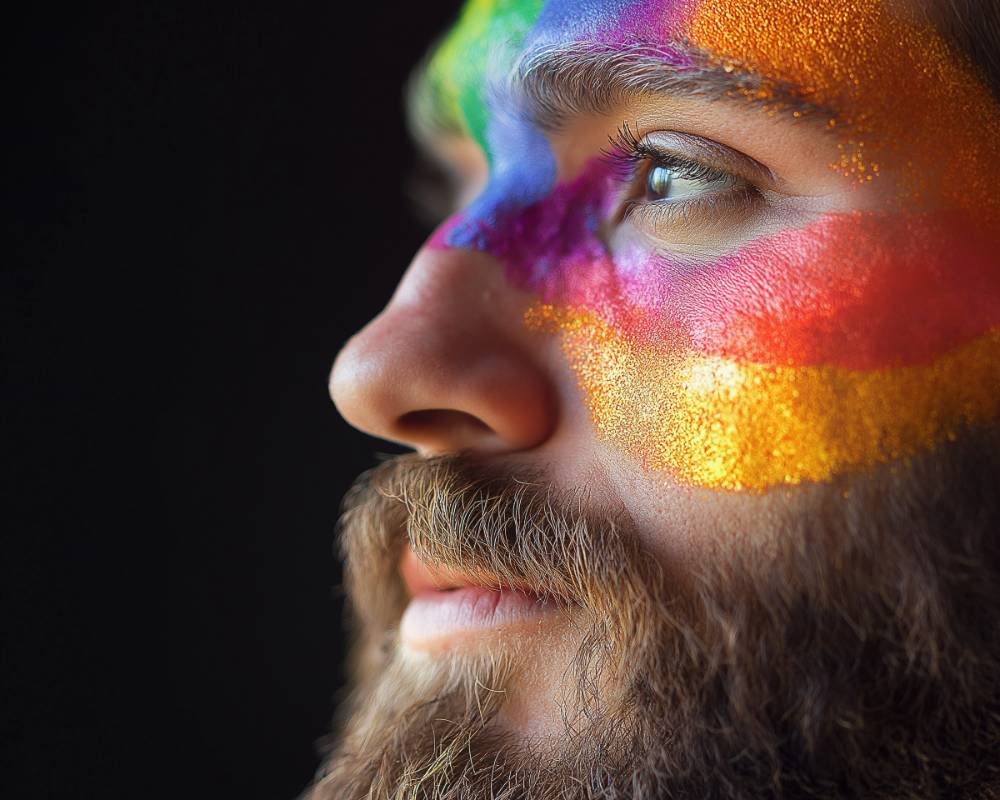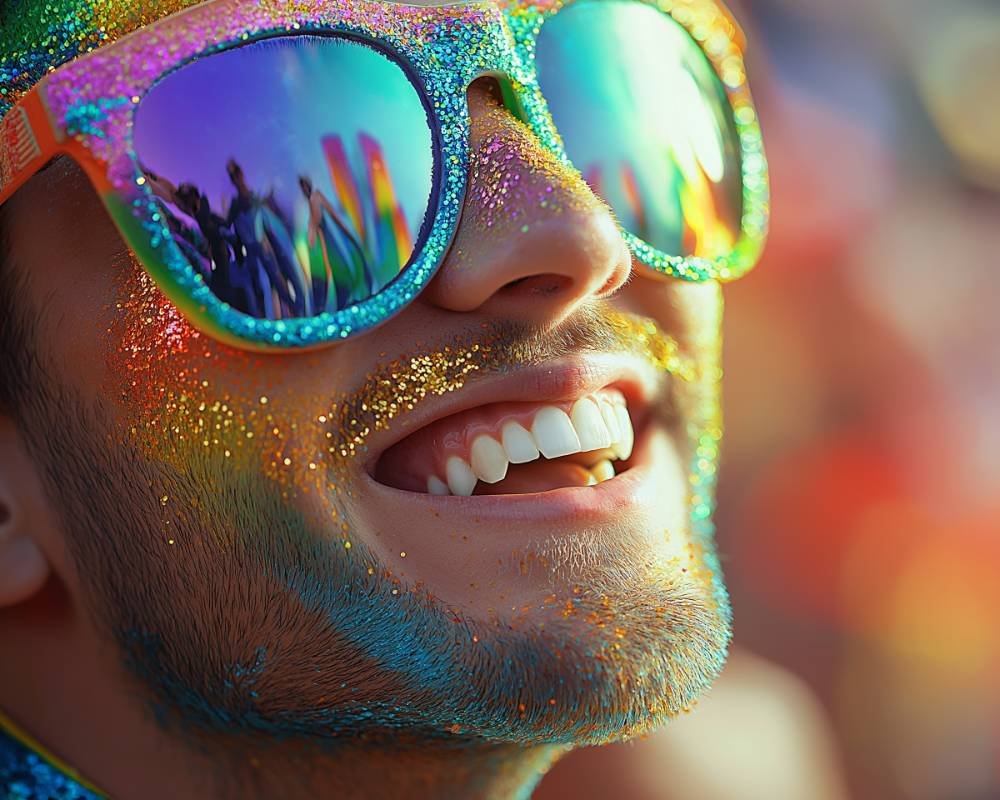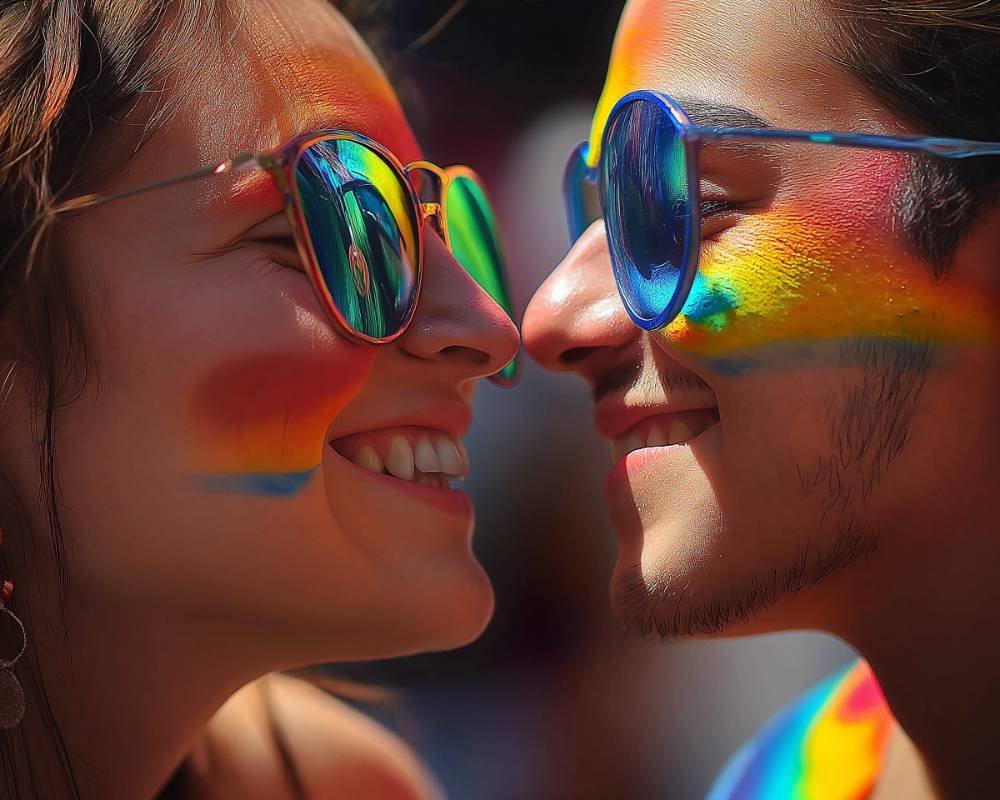
A Comprehensive Guide to the History, Significance, and Celebrations – What Is Gay Pride?
What is Gay Pride? This question might seem straightforward, but the answer is deeply rooted in history, activism, and the pursuit of equality for the LGBTQ+ community. Gay Pride is both a celebration of LGBTQ+ identities and a powerful reminder of the struggles faced by this community in their fight for recognition, acceptance, and rights.
Gay Pride has become a global movement, marked by parades, festivals, and events throughout the month of June, but its origins date back to a time when being openly gay was far from safe. Understanding what is Gay Pride requires delving into its history, the key events that shaped it, and its impact on society.
The Origins of Gay Pride: Where It All Began
To understand what is Gay Pride, we must go back to the 1960s, a time when LGBTQ+ individuals were heavily marginalized and often criminalized for their identities. The most pivotal event in the history of Gay Pride occurred on June 28, 1969, in New York City at the Stonewall Inn, a gay bar in Greenwich Village.
On that night, the Stonewall Inn was raided by police, a common occurrence at LGBTQ+ venues. However, this time, the patrons fought back. What followed was a series of riots and protests that lasted for several days. These riots, known as the Stonewall Riots, are widely considered the catalyst for the modern LGBTQ+ rights movement.
In response to the Stonewall Riots, activists organized the first Gay Pride marches in New York City, Chicago, and Los Angeles in June 1970 to commemorate the event’s anniversary. These marches marked the beginning of what would later become known as Gay Pride, a yearly celebration of LGBTQ+ identity and a call to action for equality.

What Is Gay Pride? A Symbol of LGBTQ+ Visibility
What is Gay Pride? At its core, Gay Pride is a celebration of LGBTQ+ visibility and an assertion of the right to live openly and authentically. Before the Gay Pride movement, LGBTQ+ individuals were often forced to hide their true selves due to societal pressure, legal restrictions, and the fear of violence or discrimination.
Gay Pride is about breaking free from these restrictions. It’s a time when members of the LGBTQ+ community come together to celebrate their identities, and to assert that they deserve the same rights and respect as everyone else. During Gay Pride events, you’ll see a vibrant display of rainbow flags, symbolic of the diversity within the LGBTQ+ community.
The rainbow flag was first designed by Gilbert Baker in 1978 and has since become the universal symbol of LGBTQ+ Pride. Each color in the flag represents different aspects of the LGBTQ+ experience: red for life, orange for healing, yellow for sunlight, green for nature, blue for harmony, and purple for spirit.
Advertisement · Scroll to continue
Recommended
What Is Gay Pride? A Political Movement
While Gay Pride is often associated with parades and festivals, it’s also deeply political. What is Gay Pride if not a demand for equality, justice, and human rights? From its inception, Gay Pride has been about more than just celebration—it’s been a protest, a call to action, and a way to bring attention to the injustices faced by LGBTQ+ individuals.
In the years following the Stonewall Riots, Gay Pride events continued to serve as platforms for activism. Participants advocated for changes in legislation, such as the decriminalization of homosexuality, marriage equality, and anti-discrimination laws. These efforts have led to significant progress in many parts of the world, but the fight is far from over.
In some countries, Gay Pride events are still met with resistance, and LGBTQ+ individuals continue to face violence, discrimination, and legal persecution. Even in places where LGBTQ+ rights have advanced, there are ongoing challenges, such as transgender rights and the protection of LGBTQ+ youth. What is Gay Pride today? It remains a vital political movement, highlighting both the progress that has been made and the work that still needs to be done.

Global Gay Pride Celebrations: A Worldwide Movement
Gay Pride has evolved from a local movement in New York City to a global phenomenon. Today, Gay Pride events are held in cities and countries across the world, from São Paulo to Sydney, from London to Tokyo. Each celebration is unique, reflecting the cultural and political landscape of the region, but all share the common goal of promoting LGBTQ+ visibility and equality.
What is Gay Pride like around the world? In some places, it’s a massive, colorful festival with millions of attendees. São Paulo, Brazil, holds one of the largest Gay Pride parades in the world, with over 5 million participants. In contrast, in places like Russia or certain African countries, Gay Pride events are held in secret or are banned altogether due to harsh anti-LGBTQ+ laws.
While the level of acceptance varies across the globe, Gay Pride events continue to grow in visibility and participation, with more countries joining the movement each year. What is Gay Pride in these regions? It’s often an act of bravery and defiance, with participants risking their safety to stand up for their rights.
What Is Gay Pride? A Time for LGBTQ+ Reflection and Celebration
One of the most powerful aspects of Gay Pride is that it serves as both a time for celebration and reflection. What is Gay Pride without acknowledging the past struggles of the LGBTQ+ community and those who have fought, and even died, for the rights that are enjoyed today?
Many Gay Pride events include memorials for LGBTQ+ individuals who have lost their lives due to violence, suicide, or the AIDS epidemic. It’s also a time to reflect on the progress made, from the legalization of same-sex marriage in many countries to the increased visibility of LGBTQ+ individuals in media, politics, and society at large.
At the same time, Gay Pride is a joyful occasion, filled with music, dancing, parades, and parties. It’s a time for LGBTQ+ individuals and their allies to come together, celebrate their identities, and show the world that love and acceptance will always triumph over hate and bigotry.

Advertisement · Scroll to continue
Recommended
Interesting Facts About Gay Pride
- The First Pride Parade: The first official Gay Pride Parade was held in New York City on June 28, 1970, exactly one year after the Stonewall Riots.
- Global Impact: São Paulo, Brazil, holds the record for the largest Pride Parade in the world, attracting over 5 million attendees in 2017.
- The Rainbow Flag: The original rainbow flag designed by Gilbert Baker had eight colors, but it was later reduced to six due to fabric availability.
- A Global Phenomenon: More than 150 countries now celebrate Gay Pride in some form, including countries where LGBTQ+ rights are still restricted.
- Celebrity Involvement: Many high-profile celebrities, such as Lady Gaga and Elton John, have been vocal supporters of Gay Pride and have participated in Pride events.
- Pride Beyond June: While Pride Month is celebrated in June, many cities hold their Gay Pride events at different times of the year, depending on their local climate or other factors.
- Stonewall Inn: In 2016, President Barack Obama designated the Stonewall Inn and surrounding areas as a national monument, recognizing its significance in LGBTQ+ history.
- The Largest Flag: The largest rainbow flag ever created was unfurled in Key West, Florida, in 2003. It stretched over 1.25 miles long!
What Is Gay Pride Month? Celebrating LGBTQ+ Pride in June
While many people use the terms “Gay Pride” and “Pride Month” interchangeably, it’s important to recognize that Pride Month specifically refers to the month of June, which is dedicated to celebrating LGBTQ+ Pride. What is Gay Pride Month? It’s a time to honor the LGBTQ+ community’s history, celebrate its culture, and advocate for its rights.
June was chosen as Pride Month to commemorate the Stonewall Riots, and during this month, cities around the world host a variety of events, including parades, film screenings, art exhibitions, and educational workshops.
What is Gay Pride Month beyond the parades? It’s a time for the entire LGBTQ+ community and its allies to reflect on the progress made and to mobilize for future change. It’s also an opportunity to raise awareness about ongoing issues, such as the discrimination faced by transgender individuals and the struggles of LGBTQ+ youth.

The Cultural Impact of Gay Pride
What is Gay Pride in terms of its cultural impact? Over the years, Gay Pride has played a crucial role in shifting societal attitudes toward LGBTQ+ individuals. In the 1970s, being openly gay was still taboo in many parts of the world. Today, thanks in part to Gay Pride events, there is greater acceptance and understanding of LGBTQ+ identities.
Pop culture has also embraced Gay Pride, with LGBTQ+ artists, musicians, and actors playing a significant role in mainstream media. Shows like RuPaul’s Drag Race, movies like Call Me by Your Name, and musicians like Sam Smith have helped to bring LGBTQ+ issues and culture into the spotlight.
Gay Pride has also influenced fashion, art, and music, with designers, artists, and musicians using the rainbow flag and other symbols of LGBTQ+ pride in their work. Brands have also embraced Pride, with companies like Nike, Apple, and Coca-Cola releasing Pride-themed products and donating to LGBTQ+ causes.
What Is Gay Pride? A Source of Strength for LGBTQ+ Youth
For many LGBTQ+ youth, Gay Pride represents more than just a celebration—it’s a lifeline. Growing up LGBTQ+ can be incredibly challenging, especially in environments where there is little acceptance or understanding. What is Gay Pride for these young individuals? It’s a beacon of hope, showing them that they are not alone and that there is a supportive community ready to welcome them.
Pride events often feature LGBTQ+ role models and allies who share their stories and offer support to young people struggling with their identities. By seeing others who have gone through similar experiences and come out stronger on the other side, LGBTQ+ youth can find the courage to embrace who they are and live authentically.

What Is Gay Pride? A Movement for Everyone
While Gay Pride began as a movement for LGBTQ+ individuals, it has since grown into something that everyone can be a part of. Allies—those who support LGBTQ+ rights and inclusion—play an important role in Gay Pride, standing alongside their LGBTQ+ friends, family, and colleagues to demand equality for all.
What is Gay Pride if not an invitation for everyone to join the fight for justice? Whether you’re a member of the LGBTQ+ community or an ally, Gay Pride is an opportunity to show your support for love, equality, and acceptance.
The Future of Gay Pride: Where Do We Go From Here?
As the world becomes more inclusive and accepting of LGBTQ+ identities, some might wonder, what is Gay Pride in the future? Will there still be a need for Pride events once full equality is achieved?
The answer is yes. Even as progress is made, there will always be challenges facing the LGBTQ+ community, whether they’re related to legal rights, healthcare, or social acceptance. Gay Pride will continue to serve as a reminder of the progress that has been made and as a rallying cry for continued activism and solidarity.
What is Gay Pride in the years to come? It will likely evolve, but its core message of love, equality, and acceptance will remain as powerful as ever.

FAQs About What Is Gay Pride
1. What is Gay Pride?
Gay Pride is a celebration of LGBTQ+ identities and a political movement advocating for the rights and equality of LGBTQ+ individuals.
2. Why is Gay Pride celebrated in June?
Gay Pride is celebrated in June to commemorate the Stonewall Riots, which took place in June 1969 and sparked the modern LGBTQ+ rights movement.
3. What events are part of Gay Pride?
Gay Pride events typically include parades, festivals, art exhibitions, workshops, and panel discussions aimed at celebrating LGBTQ+ culture and raising awareness about LGBTQ+ issues.
4. Who can participate in Gay Pride?
Everyone is welcome to participate in Gay Pride, including LGBTQ+ individuals and allies who support the fight for equality.
5. What is the rainbow flag?
The rainbow flag is a symbol of LGBTQ+ pride and diversity. Each color in the flag represents different aspects of LGBTQ+ identity.

6. What is the significance of the Stonewall Riots?
The Stonewall Riots were a turning point in LGBTQ+ history, leading to the formation of the modern LGBTQ+ rights movement and the creation of Gay Pride.
7. What is Gay Pride Month?
Gay Pride Month, celebrated in June, is dedicated to honoring the history of the LGBTQ+ community, celebrating its culture, and advocating for equality.
8. Are there Gay Pride events outside of June?
Yes, while June is officially Pride Month, many cities hold Gay Pride events at different times of the year.
9. What is the role of allies in Gay Pride?
Allies play an important role in Gay Pride by showing their support for LGBTQ+ rights and inclusion.
10. What are some famous Gay Pride parades?
Some of the largest Gay Pride parades are held in cities like New York, São Paulo, London, and San Francisco.
11. What challenges does the LGBTQ+ community still face?
The LGBTQ+ community continues to face challenges such as discrimination, violence, legal inequalities, and healthcare disparities.

12. Can children attend Gay Pride events?
Yes, many Gay Pride events are family-friendly, and LGBTQ+ families often participate in the celebrations.
13. How has Gay Pride evolved over the years?
Gay Pride has evolved from a small protest movement to a global celebration of LGBTQ+ identity and culture.
14. What is the role of Gay Pride in the fight for LGBTQ+ rights?
Gay Pride is a powerful platform for advocating for LGBTQ+ rights, raising awareness, and pushing for legal and social changes.
15. How can I support Gay Pride?
You can support Gay Pride by attending events, advocating for LGBTQ+ rights, educating yourself on LGBTQ+ issues, and being an ally.
16. Is Gay Pride celebrated worldwide?
Yes, Gay Pride is celebrated in countries around the world, though the level of acceptance and participation varies by region.
17. What is the connection between Gay Pride and marriage equality?
Gay Pride played a significant role in the fight for marriage equality, which has been legalized in many countries due to LGBTQ+ activism.

18. Are there different types of Pride flags?
Yes, in addition to the rainbow flag, there are other flags that represent different identities within the LGBTQ+ community, such as the transgender flag and bisexual flag.
19. What is the future of Gay Pride?
The future of Gay Pride will likely involve continued advocacy for LGBTQ+ rights, as well as a celebration of the diversity within the LGBTQ+ community.
20. What is the role of corporations in Gay Pride?
Many corporations show their support for Gay Pride by sponsoring events, releasing Pride-themed products, and donating to LGBTQ+ causes.
21. Can Gay Pride help reduce LGBTQ+ discrimination?
Yes, by raising awareness and promoting visibility, Gay Pride can help reduce discrimination against LGBTQ+ individuals.
22. Why is Gay Pride important?
Gay Pride is important because it promotes acceptance, celebrates diversity, and advocates for the rights and dignity of LGBTQ+ individuals.
23. How can LGBTQ+ youth benefit from Gay Pride?
LGBTQ+ youth benefit from Gay Pride by seeing role models, finding support, and gaining confidence in their identities.

24. What is the impact of Gay Pride on society?
Gay Pride has had a significant impact on society by increasing visibility for LGBTQ+ individuals, challenging stereotypes, and promoting equality and acceptance.
Conclusion: What Is Gay Pride?
In conclusion, what is Gay Pride is more than just a celebration—it’s a powerful movement that has changed the course of history for the LGBTQ+ community. From its origins in the Stonewall Riots to its status as a global phenomenon, Gay Pride has played a vital role in advocating for equality, raising awareness, and celebrating LGBTQ+ identities.
As we move forward, Gay Pride will continue to serve as a reminder of the progress that has been made, as well as the work that remains to be done. Whether you’re part of the LGBTQ+ community or an ally, Gay Pride is an invitation to stand up for love, equality, and acceptance.
Advertisement · Scroll to continue

More Recommended
Why Are Gay Stereotypes Harmful?
Why Are Gay Stereotypes Harmful? – Stereotypes have always been a prevalent issue in society, [...]
What Are the Best Gay Dating Apps Right Now?
What Are the Best Gay Dating Apps Right Now? – Are you ready to dive [...]
Transvestite Meaning & Definition
Transvestite Definition & Meaning: Understanding the Concept and Its Cultural Significance Transvestite Meaning – In [...]
What Are the Most Common Myths About Gays?
What Are the Most Common Myths About Gays? – The LGBTQ+ community has long been [...]
LGBT Rights in Palestine
LGBT Rights in Palestine: An In-Depth Exploration The rights and experiences of LGBTQ+ individuals vary [...]
Best Single Lesbian Travel Groups
The Best Single Lesbian Travel Groups: An In-Depth Guide 1. Introduction – Best Single Lesbian [...]
What Are the Top Gay-Friendly Universities?
What Are the Top Gay-Friendly Universities? – When searching for the perfect university to attend, [...]
How do I make my team feel inclusive?
How do I make my team feel inclusive? – Creating an inclusive environment within your [...]
How to retain diverse employees?
How to retain diverse employees? – —In today’s rapidly evolving workplace, understanding the nuances of [...]